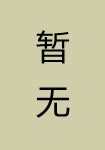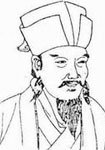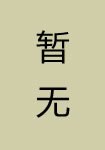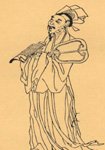您现在的位置是:主页 > 名句 > 名句
古诗词鉴赏抒情手法指导
![]() admin2024-03-08【诗人】人已围观
admin2024-03-08【诗人】人已围观
简介直接抒情 直抒胸臆也叫直抒胸臆。 是诗人在诗中表露心声,毫不掩饰地抒发激情、愉悦或秋意的一种文体,即以第一人称我为词的主体,直接表达作者的思想和感受。 这种方法比较直
直接抒情
——直抒胸臆也叫直抒胸臆。 是诗人在诗中表露心声,毫不掩饰地抒发激情、愉悦或秋意的一种文体,即以第一人称“我”为词的主体,直接表达作者的思想和感受。 这种方法比较直观,这里仅举三个例子,不再赘述。
例一:“暗能断眉弯腰侍奉权贵,使我不悦。” (李白《梦游天目令刘送别》中心句) 【解析】作者在叙事描写的基础上,用火山爆发般的激情,大声呐喊,表达了自己不在同一个世界的思绪。船为尺。
例二:“死之时,知万物皆空,九州不见同。 表达了诗人至死不忘光复中原的爱国情怀。
例3:“日出山头,黄河入海,欲见千里,登高望远。” (王之焕《登鹳雀楼》) 【解析】前两句写景物,后两句直接表达了在自然环境中产生的感受,表达了诗人面对自然的哲思。场景。 眼前的自然情境、浩瀚大气与诗人的哲思融为一体。
例4:“天涯若比邻,月短花飞瞬。手执送别杯,眼里有离别泪。只是一句“保重安息”,痛痛得让人舍不得。 ’” (关汉卿《【双曲】醉东风》) 【解析】这首歌描写了别离的情景和依依不舍的情愫,真挚感人。
例5:“握住你的手,看着你泪眼婆娑的眼睛,你却说不出话来。” (刘永《玉林玲》) 【解析】写的场景和这首歌差不多。 但这首歌的表达是那样的直白,语言是那样的朴实自然,与大多数委婉的作品截然不同。
例6:“古不见古人,后不见来者,阅世悲泪。” (陈子昂《灯友周台歌》) 【解析】以宽厚悲壮的语气,通过灯友周台,直抒胸臆,抒发了诗人辛勤劳作、志存高远、失意沮丧的悲愤。
间接抒情
一、借景抒情
(一)欣赏表达
在诗歌中,主要使用四种表达方式:叙述、描写、议论和抒情。 描写手法有动静结合、虚实结合等; 抒情手法有直抒胸臆、借景抒情、景物融情、景物交融等。 在欣赏诗歌时,要注意分析和把握这些技巧的表现效果,从而更好地理解诗歌中的意象,进入诗歌的意境,领悟作者的情感。
【知识梳理】
一、抒情方式
抒情体是指作者在诗歌中表达主观感受、抒发情感的一种表现方式,可分为直接抒情和间接抒情两种。
1.直接抒情。 直接抒情也叫直抒胸臆或直抒胸臆。 它是诗人在诗歌中表露内心,毫不掩饰地抒发愉悦、忧郁或激情的一种抒情方式。 即以第一人称“我”为抒情表达的主语,直接表达作者的思想感情。 一种写作风格。
2.间接抒情。 间接抒情也叫委婉含蓄。 诗人常常运用各种修辞艺术,委婉地表达自己的思想感情。 所谓情在景,景交融,一切景语都是情语。 间接抒情的基本形式,在表现手法上,有五种情景交融的形式,即触景生情、借景造情、以情布景、寄情于景、表现情境。现场。
【如何提问】
(1) 这首诗的抒情性如何(融情于景,述情抒情)?
(2) 请从情境关系的角度分析这首诗。
(3)这首诗采用了什么样的表现方法(表现手法、艺术手法)?
(4)诗人是怎样抒发感情的,效果如何?
【答题步骤】
(1)第一步:明确使用了哪种抒情手法。 (清晰的观点)
(2)第二步:结合具体诗句,简要说明运用该技巧的效果。 (分析效果)
(3)第三步:指出诗人这样表达了什么样的情感。 (解析内涵)
【如何打电话】
①触景生情:作者内心虽有某种情感,但隐而不露。 是触动当下的情境,触发作者的抒发。 这类诗一般都是先描景,后抒情。
别当东大
高健身
千里黄云白日,北风吹雁雪。
以后也不愁没有知己,天下无人知君。
诗前两句描写景色和天气突变:“千里黄云”,北风狂舞,大雪纷飞,象征董大的处境不妙。 最后两句是诗人安慰董大的话,意思是不要为未来忧虑,世界上有很多人知道你! 安慰的话看似平淡无奇,实则表达了诗人与董大之间深厚的情谊。
②恋景:恋景是指在诗末以描写景物的深情句结束全诗。 这种诗先写情,后以景衬托。 这里以情触景,恰恰突出了情,打破了表达的常规次序,先情后景,含蓄、委婉、含蓄。 诗在议论或抒情的基础上戛然而止,转而描写景物,以景物和爱情结束。 这种写法能使诗收到“此时无情胜过情”的效果,往往使诗显得未完成,形象含蓄,有嚼劲。
军队行军(第 2 部分)
王长岭
琵琶舞新声,总关山旧情。
烦忧愁不禁听,秋高月照长城。
这首诗是典型的“恋景”诗。 前三句叙事抒情,末句写景。 这种比较性的写法,更能表现出听者深沉的爱与悲哀。 以景收尾,将情感寄托于景,营造意境,意境无限。 这首诗的前三句,都是以乐声抒情。 说到《卞愁》,用的是“听不尽”二字。 仿佛在军中酒足饭饱之后,顿时有了月照长城的景象。 画面中,古老雄伟的长城纵横交错,秋月皎洁。 场面壮阔悲凉,进一步加深了诗人的思乡之情。 这种借景抒情、恋景,比直接抒发离别之愁更具有感染力,隐含着一种无言伤感的情感魅力。
③命底:命底是指因情取景,景因情染,景因情生,情因景生,景相融。 景物一旦染上了诗人不同的情感色彩,就会成为意象,景物出现在情感之中,情感包含在景物之中。
忆江南
白居易
江南好,风景旧。 日出江花红胜火,
春天江水绿如蓝,你能不记江南吗?
写江南春色时,首句“江南好”用一个质朴圆润的“好”字概括了江南春色的种种优点,又包含作者的赞美和向往。 第二句指出,江南风光的“好”,不是从传闻中得来的,而是作者的亲身经历和切身体会。 然后,以爱情为背景,用“日出江花”、“春来江水”三四句来说明江南的“好”。
④ 寄情于景:寄情于景是意境创作的重要手段,景是情的载体,情是景的灵魂; 送什么样的爱,因情况而异。 这种诗句看似句句描写景物,却是抒情的,情蕴于景,景融于景。
姜南春
杜牧
千里黄莺唱绿唱红,水乡山川,国酒旗飘扬。
南朝四百八十座寺庙中,有多少座塔在烟雨中。
该诗以明快的笔触描绘了一幅江南水乡春色秀美的画卷。 四句皆写景致情。 一两句,浩瀚江南万里黄莺欢歌,绿树丛映红花丛,临水村寨依山城墙酒旗随风摇曳尽在眼前,如同诗人生花妙笔的染染,更是荡气回肠。 三四句,金碧辉煌的佛寺,楼宇重重,本已给人深远的感觉,现在诗人却刻意将它掩藏在烟雨蒙蒙中,增添了一种朦胧迷离的色彩。 全诗充满了诗人对江南风光的赞叹和迷恋。
⑤景情:有的诗词表面上看是抒情的。 细读诗歌要触景生情,意境相合。 但写诗时省略景物,直抒胸臆。
邓友洲泰格
陈子昂
古人不见前,后人不见。
想起天地之间的遥远距离,我独自难过,泪流满面。
这首诗是诗人登上幽州台时的感叹。 从不满现状的声音中,我们不仅可以了解到幽州台的风气,还可以感知当时的社会环境。 因此,虽然省略了诗中的景物,但仍将诗中的意境表现得淋漓尽致。
⑥ 景物交融:诗中既有景物描写成分,又有抒情成分。 两者是一体的,密不可分。
登高杜甫
风急天高,猿啼哀鸣,清沙白鸟尽归飞。
无边的倒树沙沙作响,一望无际的长江滚滚而来。
千里悲秋常为客,百载病重。
艰辛恨繁鬓,落魄新人挡脏酒杯。
这首诗前四句写景,后四句抒情,前后感情融为一体。 ,倒树沙沙作响,唤起诗人的生命体验感。 诗人把新忧旧恨凝结在最后四句诗中,一字尽尽情怀。 从全诗看,景象和谐,无迹可寻。 情是景中情,景是情中景。
【实操】
黄鹤楼
崔浩
往日人已乘黄鹤而去,黄鹤楼空于此。
黄鹤一去不复返,白云万年空。
青川满汉阳树,芳草萋萋鹦鹉岛上。
日木乡关在什么地方? 烟波江让人忧。
问:诗中哪个词最能概括作者的心情? 请在对全诗整体观感的基础上,简要分析诗人在结尾处是如何表达这种感情的。
解题思路: 第一:体会诗中情景交融的意境。 自然景物一旦被诗人描绘出来,就必然带有诗人的情感色彩,服务于具体的情感表达。 其次,要理解诗人描写景物所表达的情感。 三是注重诗歌赏析的写作技巧和语言特点。 描写风景的方式有很多种。 既要注意作者观察和描写景物的角度,又要把握和分析作者描写景物的方法; 我们必须理解和解释描述风景等的技巧。
示例答案:“担心”这个词。 全诗意境博大,映古伤今,虚实相衬,情景交融。 尾联将“乡愁”之情与“晚霞”、“烟波”的景致融为一体,抒发了诗人无尽的思念,无尽的思念。
2.预言诗
(一)知识储备
一、概念:
借物抒情诗是描写客观世界中特定事物的一种诗歌,如景物、器物、动植物等,抒发作者的思想感情,以抒发作者的志向为主要内容。 它体现了作者的写作目的和描写对象所要表达的思想感情。
借物抒情是一种表现手法(或称艺术手法),即诗人将自己的某些理想、个性或感情融入到一些具体的事物中,是物与意的结合。
借用什么:既是作者理想、宗旨、气节的体现,又是作品主题和形象的载体。
物:托物以表志,往往依托于某物的某些特性。 这个“物”不是“景”,咏物也不是景物的描写。 借景抒情中的“景”,指的是自然景物,不是某种物体。
志:可以指感受、志向、情操、爱好、愿望、要求等。表达情感的“感受”具体指爱、恨、赞、喜、悲等感受。
2.特点:
在内容上——以某物为描写对象,抓住其某些特征(形状、颜色、环境等)并刻意描写,追求“形似”。
在意识形态方面——往往是借物抒志,由物至人,由实至虚,写精神品格,追求“神似”。
描其形,求形似; 融于理,求神同。 形式与精神密不可分。
情感——或抒发他崇高理想的悲哀,君主的忧虑,或写他怀才不遇的感受。
常用的表现手法——借物抒情、重物情、借物喻人、明喻、象征、拟人、比较、隐喻、联想、想象等。
三、分类
描述模态
这种咏物诗只是形象地描写了物的情态,以表达作者对物的热爱。 比如骆宾王的《鹅颂》“鹅鹅鹅,对天高歌。白发飘绿水,红掌抚清波”。 磁带。 薄叶不知谁剪,二月春风如剪刀。” 苏轼《海棠》“东风袅袅重光,香雾空月转廊。深夜怕花儿睡,高烛照。”红妆。” 前两句写海棠生长环境富饶,说明海棠的珍贵,后两句写深夜点烛赏海棠花。 诗人爱花爱美,深爱不已。
实质性演讲课
这类写物诗,从表面上看,似乎是在写具体的物,但细细品味就会发现,作者通过写具体的“物”,用象征手法来表达内心的诉求和愿望。
我们先来看看白居易的《白云拳》:
天平山白云泉上,云无心水有闲。
何必匆匆下山,为世间添波澜。
这首诗的抒情主人公是一个官吏,心胸淡泊,精神闲适,有脱俗之心,有隐逸之思。 以象征手法描写景物、抒发志向,以云水的悠然自在来形容心灵的宁静与悠然的心情,以泉水激起的自然风暴来象征社会的风浪。
我们来看看南宋著名爱国诗人于谦的一首《石灰歌》:
千锤凿深山,火烧如焚。
我不怕被砸得粉身碎骨,但我要在这个世界上保持清白。
乍一看,这首诗写的是石灰开采、冶炼和使用的全过程。 细细体会,诗中的句句不单单是“物(石灰)”,还有人。 作家本人不怕“千锤万凿”、“烈火焚身”,甚至“粉身碎骨”。 大无畏的革命英雄主义。 诗中所流露的浩然正气和豪迈情怀,鼓舞和鼓舞了后世许多为真理和正义而奋斗的人。
我们来看看清代“扬州八怪”之一郑板桥的《竹石图》:
执着青山不放,根本在碎石中。
千锤百炼依旧顽强,让风自东南吹西北。
诗中有画,画中有诗。 一个傲骨不屈的壮竹形象浮现在我们的脑海中。 顶天立地破磐石,扶青山挺身而出。 这种豪情,正是诗人所追求和向往的。 他坚定的意志、顽强的精神和不屈不挠的气节,在这首诗中表现得淋漓尽致。
吟唱和表达感受
在咏物诗中,咏物抒情的诗可以说是比比皆是。 这类诗与借物抒情诗有很多相似之处,只是所表达的情感较为短暂,与“物”所处的具体环境和作者当时的个人境遇更为密切.
例如,初唐诗人俞世南曾写过一首描写蝉的诗(《蝉》):
垂饮清露,流舒通。
远方喧嚣,不借秋风。
诗前两句描写蝉的容貌气质,后两句道出蝉声远传之故。 这里蝉的“挂緌”有点像古代的官帽,其实指的是作者本人,而“饮清露”则象征着作者如蝉般清廉。 “不因秋风”,说明他认为自己有好名声和美名,不是因为他的高位和分量,而是因为他的“德”。 诗中流露出作者对自己的才华和品德的高度自信,甚至还带着一丝得意。
然而,李商隐的感受与虞世南(《蝉》)的感受截然不同:
以高难饱,徒恨飞生。 五时欲断欲疏,一树无情。
博欢梗还在蔓延,家乡已被夷为平地。 范君最当警察,我也收拾家里。
李商隐生于晚唐,始终处于“牛李党争”的漩涡之中。 他总是不成功,他的心情常常是悲伤的。 这首诗是自嘲的。 因为蝉在高高的树梢上,只能吸风吸露。 声音再大也没用。 这是一种能源浪费。 自己不也一样吗? 因我太高尚,不从人,纵然不断地写诗作文,怨天尤人,甚至写到筋疲力尽,也没有任何回应,何等悲哀! 诗人的牢骚、悲愤、怀才不遇的悲愤,在这里表现得淋漓尽致。
与贺知章的《柳赋》相比,李商隐的《柳》表达了作者志存高远、命运艰辛的悲凉心境:
一追东风吹舞宴,游春园断肠天。
晴秋之日,怎舍得带夕阳蝉鸣。
前两句写春柳追东风,在繁花似锦的乐游园舞宴上与舞女翩翩起舞; 多么的压抑和凄凉。 春柳之盛与秋柳之衰形成对比,表现出作者对秋柳的感叹和自己的人生经历。
还有曾巩的《柳赋》:
乱条未黄,倚东风发狂。
飞花揭日月,不知世间有清霜
其实言下之意就是揭露和讽刺当权时横行霸道的小人,警示他们不会有好下场。
人类
这类写事诗所描写或吟唱的“事”,与某一类、某一类人相似,并非仅指向作者本人。 北宋宰相李纲的《病牛》就是一个典型:
耕种千亩,产万箱,累了谁来疗伤。
但若众生皆知足,何不卧于夕阳下?
“耕千亩”“力竭”表现了牛的辛劳,“悟千箱”突出了牛劳动的硕果和对人类的贡献。 然而,尽管有如此大的贡献,黄牛们仍然毫无怨言。 遗憾,担当:只要世间众生能吃饱,又何必老弱病残,夕阳西下? 作者的这首小诗,既是对病牛的敬意和致敬,也是对像老牛一样勤劳、朴实、无私的劳动人民的颂扬和赞美。
生物学
这类诗的主要特点是通过具体的意象来说明一些“道理”,即从具体事物的“道理”中推导出普遍的道理。 宋代儒学盛行,写这类诗的人最多。
比如北宋著名文学家、诗人苏轼的《秦诗》就是最好的例子。 诗曰:
如果琴弦上有钢琴声,为什么不把它放在盒子里呢?
声音在指上,何不听君指。
这首诗表面上是在探究琴声的根源,实际上,作者是想通过这首诗来揭示文艺作品创作的原理,即:在文艺作品的创作中,材料和工艺同样重要。 两者缺一不可。 就像弹琴一样,只有将“琴(材)”和“指(技)”有机地结合起来,才能产生优美的琴声(优秀的文学作品)。
一首好的咏物诗总是以其生动的形象和强烈的美感吸引着读者,通过有意无意、或多或少或深或浅的咏物,或流露作者的人生态度,或体现美好的理想,或暗含真理。生活。
四、特点总结
(1). 咏物诗要描写物体的声、形、色等相应的外在特征,有时也写其所处环境的特征,求其“形似”。 [完美的歌曲]
(2). 从物到人,从实到虚,写出精神品格,求其“神似”。 [不卡在东西里]
(3). 从整体立意来看,要通过事物来表达自己的意志,从局部分析来分析常用的隐喻、拟人、比较、象征等手法。
(4). 从描写手法来看,除了正面描写外,侧面描写的手法也很常用。
五、诗物鉴赏法
(1). 《读清》全诗。
(2). 提取描述书写对象特征的词语,分析吟诵对象的外在特征和环境特征,挖掘对象的内在性格和精神,把握“对象”与“意志”的交汇点。
(3). 联系诗人自身的经历和社会环境,揣摩诗人的情怀和志向。 (诗人把自己的志向寄托在所吟咏对象的突出特征上,“志”在于对象的特征与诗人的情感、志向的相似性。)
(4). 体会诗人的高超技法——解析咏物诗的写作技巧(借物抒情、借物抒情、拟人、比喻、衬托、比喻等)
六、答题技巧总结:
一般提问方法:陈述诗中所咏物的意象特征(作者创造的主要意象是什么),表达了什么样的思想感情。
答题思路:结合诗词分析所咏物的特点,特别是内在神韵和品格; 结合诗人自身的经历和思想来分析寄托之情。
回答模式:
一般:通过什么+表达(嵌入、揭示)什么情感。
形象特征:环境特征+自身特征
表达的情感:什么样的内容包含什么样的情感
表达方式:所托+形象特征+表达功能+所言之志
(2) 例子
【例1】
蝉
余世南
垂饮清露,流舒通。
远方喧嚣,不借秋风。
1)这首诗描写的蝉有什么特点?
提示:夏天的蝉在高大的树上喝着露水自由地歌唱。
2)这首诗的思想内容是什么?
提醒:只要品格高尚,名声自然远播,不需要外援。
3) 这首诗的主要艺术手法是什么?
提示:发表声明
【例2】
咏梅
陆游
站外断桥边,寂寞无主。 独愁已暮,风雨更甚。
无心争春,一任群芳妒。 散成泥沙,唯余香依旧。
1)分析这首诗的意象特征。
(提示:环境特征:黄昏断桥,风吹雨打,寒冷凄凉。自身特征:不与别香争春,身虽残,香依旧。)
2)这首诗中提到的志向是什么?
(提示:以物喻人,是隐喻作者在遭遇不幸和前途坎坷的情况下,高尚的气节和不屈不挠的奋斗精神。)
3)试分析这首诗的艺术手法。
(提示:(1)支持事物表达自己的意志,(2)衬托环境。)
【例3】
柳
李商隐
一追东风吹舞宴,游春园断肠天。
晴秋之日,怎舍得带夕阳蝉鸣。
【注】李商隐年少中进士,意气风发,信心十足,但因党争,长期做小官。 诗人写这首诗时,他的妻子刚刚病逝,他将孤身一人赴蜀,过着幕府的繁琐生涯。
1)试分析《曾朱东风赋无言》中“朱”字的微妙之处。
提示:“被”字写柳枝追春风,用拟人化的手法化被动为主动,写出柳树蓬勃的生命力。
2)试分析这首诗中对比的表现手法。
提示:前两句写春柳追东风,在繁华的乐游园舞宴上与舞女翩翩起舞; 哀嚎,多么凄凉凄凉。 春柳之盛与秋柳之衰相映成趣,抒发对秋柳的悲叹。
3) 诗人在诗中表达了什么样的思想感情?
提示:表达作者雄心壮志得不到回报,命运久远的凄凉心境。
【例4】
画眉
欧阳修
百转千声随意而动,山花红紫树高低错落。
Shi Zhisuo listens to the golden cage, which is not as good as the free singing in the forest.
1) What is written in the first two sentences?
(Hint: The first two sentences describe the beautiful image of thrushes in the forest being free.)
2) What techniques are used in the last two sentences to express the author's thoughts?
(Hint: By using contrasting techniques, the comparison between the thrush in the cage and the thrush in the forest expresses the author's praise and pursuit of freedom.)
3. Practical exercises
1. Read the following poem and answer the questions
sitting at night
张雷
There is no one in the courtyard, and the autumn moon is bright, and the night frost is about to fall before it clears up.
The sycamore tree is really unwilling to fade away, and the few leaves still make a sound in the wind.
When Yan Yu talked about the benefits of poetry in Canglang Poetry Talk, he once claimed that "words are exhausted but meanings are endless". What profound meaning do you understand from this poem? Please combine the whole poem with a brief appreciation.
[Reference answer] This poem first explained the bleak and cold autumn scenery, and then wrote about the phoenix tree in such an environment. From here, we can see the author's inner stubbornness and positive attitude towards life. (Zhang Lei was talented since he was a child, but his official career was very bumpy. After being dismissed from office in his later years, he devoted himself to leisure and hardship, but he never talked about poverty, showing a resolute and detached character. This poem is a portrayal of his character.)
2. Read the following poem and answer the questions
刘勇
曾工
The chaotic strips have not yet turned yellow, and they become mad when leaning on the east wind.
The solution covers the sun and the moon with flying flowers, not knowing that there is clear frost in the sky and the earth.
The title of this poem "Ode to the Willows" actually holds the meaning of objects. Please try to figure it out and analyze its meaning.
[Reference answer] Through the description of the willow tree "relying on the east wind and becoming mad" and "flying flowers against the sun and the moon", I wrote about those villains who became wild when they were successful; and warned them with "clear frost in the world" that they will have no good end and cannot escape The fate of perishing.
3. Read the following two poems and answer the questions
Qi'an County Middle School Puppets
杜牧
On the two sunset bridges, half a wisp of smoke is in the shadow of willows.
How many green lotuses rely on each other and hate each other, looking back for a moment to carry the west wind.
Twilight swims on the lotus pond
杨万里
Xiaocao shook his head and suddenly reported to Nong, blocking a westerly wind with his cloak.
The lotus is still sad and hot at dusk, and its lower face is hidden deep in the green umbrella.
(1) These two poems describe the scenery at the moment of ____, and both use lotus and ____ as the main images of the poems. (2分钟)
(2) What expressive techniques are used in these two poems to portray the image of "Lotus"? Please point out the different emotional characteristics of "Lotus" in the two poems, and make a brief analysis. (4 分)
Answer: (1) West wind in the evening
(2) Anthropomorphic expression techniques. The "Green Lotus" in the previous song has "hate" and "bears the west wind", which contains the hatred of the poet, expresses the sentimental and injustice, and the tone is sad and low. The "Lotus" in the last song is blown by the west wind and hides in the lotus leaves. It seems to be "sorrowful and hot", but it is shy, revealing the author's love and joy, and the tone is lively and interesting.
Summarize the main points of the answer: technique + expression
3. Leveraging the past to satirize the present
Using the past to satirize the present is to use the ancient people and things to manipulate the reality. The purpose of borrowing from the past is to satirize the present and learn from the past to see the present. Leveraging the past to satirize the present is one of the commonly used lyrical methods in epic poems. Prose such as Su Xun's "On the Six Kingdoms" and Du Mu's "A Fang Gong Fu" are also typical works of using the past to satirize the present.
(1) Classification of borrowing from the past to satirize the present
1. Praising the past is not the present, expressing the emotion of the prosperity of the past and the decline of the present, and the change of things and people.
石头城
刘禹锡
The mountains surround the homeland, and the tide beats the empty city back lonely.
To the east of the Huai River is the old moon, and it is late at night to pass the female wall.
The whole poem describes the scenery, the silent mountains are still there, the sound of the cool tide is still there, and the hazy moonlight is still there. All the descriptions of the scenery are intended to say "things are"; The prosperity and wealth of the six generations have disappeared, which is "human beings are not". The desolation and desolation of the motherland are shown in the description of the scenery, and each scene is fused with the poet's deep sentimentality of the depression of the motherland and the desolation of life. This kind of lyrical content is not a sentimental epic poem, which is also called borrowing the past to hurt the present.
2. Belittle the past and stab the present, express dissatisfaction with the current reality or warn the ruler.
Osmanthus Fragrance·Jinling Nostalgia
王安石
It's late autumn in my homeland, and the weather is beginning to be sober. Thousands of miles of Chengjiang seem to be practiced, and emerald peaks are like clusters. Sailing sails to the setting sun, with the westerly wind on your back, and the wine flag slanting. The clouds on the colorful boats are light, and the stars and herons are rising. It is difficult to draw a picture.
Reminiscing about the past, bustling and competing, sighing at the building outside the door, grief and hatred continue. For thousands of years, he has lamented honor and disgrace for this. The old things of the Six Dynasties follow the flowing water, but the cold smoke fades and the grass turns green. Up to now, business women still sing from time to time, a song left behind in the back court.
The first film starts with the four characters "boarding and seeing off", which expresses the essence of the scenery of the country and mountains in the "late autumn of the motherland" layer by layer. In the second film, the sentence "remembering the past, competing with prosperity" is turned into nostalgia, lamenting that the six dynasties all fell one after another because of desolation and joy; It means to warn the world about the time of sorrow, and it actually uses history to warn the rulers of the current dynasty not to blindly indulge in enjoyment and repeat the mistakes of history.
(2) The emotion of borrowing the past to satirize the present
Poems borrowing from the past to satirize the present refer to the experience and lessons of historical figures or events, as a reference to some aspects of the real society. There are five main kinds of thoughts and emotions expressed in poems that use the past to satirize the present: one is to express the emotion of the prosperity of the past and the decline of the present, and that things are right and people are wrong. The second is to express the feeling of changing things and changing stars, and the vicissitudes of the world. The third is to expose (criticize) the fatuousness and corruption of the rulers who are greedy for pleasure and extravagance. The fourth is to express sympathy for the suffering of the people and worry about the fate of the country. The fifth is to warn the rulers to learn the lessons of history so as not to repeat the mistakes of history.
Reading Long Regrets by Li Gou
The road to Shu is like rain in the sky and night, and the ringing of chaotic bells is double-stained.
At that time, there were more deaths in the army, so the king was not moved.
Ma Wei Yuan Mei
Don't sing songs of old age's hatred, the world also has its own galaxy.
In Shihao Village, husband and wife parted, and there were more tears than those in the Hall of Eternal Life.
The two poems are the emotions expressed by reading Bai Juyi's "Song of Everlasting Regret". Although they both have a critical attitude towards the love between Tang Xuanzong and Yang Guifei, the objects of criticism are different. Li's poems mainly satirize Tang Xuanzong's love of beauties rather than Jiangshan, who only cares about personal enjoyment and ignores the lives and deaths of soldiers. It highlights its stupidity and licentiousness. The object of Yuan Shi's criticism is "Song of Everlasting Sorrow", because this poem only sings the love tragedy of two people and does not see the tragedy of the displacement of the people. It strongly criticized the feudal rulers and expressed deep sympathy for the unfortunate experience of the people.
很赞哦! ()






